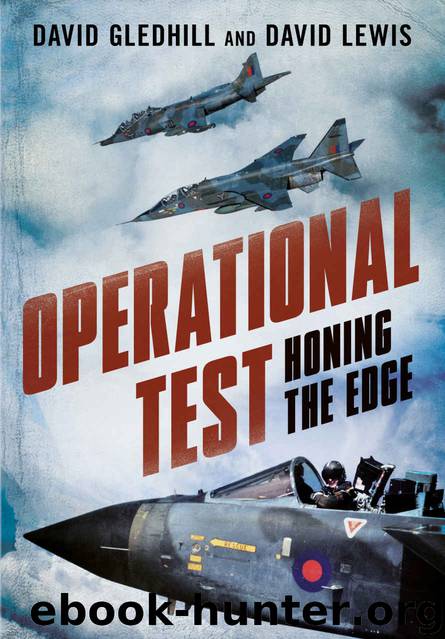Operational Test: Honing the Edge by David Gledhill

Author:David Gledhill [Gledhill , David]
Language: eng
Format: azw3
ISBN: 9781781555712
Publisher: Fonthill Media
Published: 2017-06-11T04:00:00+00:00
Tornado F3 radar display in single target track mode firing against a target flying at Mach 2.
The Skyflash leaves the aircraft.
The Frazer Nash missile launcher under the Tornado F3.
The other missile carried by the Tornado F3 was the Sidewinder AIM-9L, which became the subject of another trial known as Trial Addiss. To explain the designation, the USA uses a series of initials to designate weapons, a letter each for environment, mission, and type. In the case of the Sidewinder, the ‘A’ is for air, the ‘I’ for intercept, and the ‘M’ tells you it is a guided missile. The early Tornado F2s could carry two AIM9-Ls, but with the upgrade to F3 standard, the fleet was quickly modified to carry four. The missile was agile, fast, and it was very capable for its day. The most common counter to an infrared guided missile was, and remains to some extent, the flare. Tactical aircraft will normally carry a dispenser for flares that can be ejected either manually by the pilot on seeing a missile, or automatically by some form of missile-approach warner. The flare burns intensely in the wake of the targeted aircraft, presenting the incoming missile with two targets—the jet pipe it was aimed at and a very hot flare. The plan is that the missile prefers the flare to the cooler jet pipe and is decoyed away from the aircraft. This aspect of trials will be investigated in a later chapter.
Some Russian infrared air-to-air missile designs may have been based on earlier western missiles; however, in the 1970s, they went their own way and produced some very effective weapons. We in the West are, of course, curious about their capabilities, particularly their ability to counter the flare problem. Most missiles will have a method of detecting that a flare has been deployed; they will attempt to ignore it and keep heading towards the intended target. They do this in several ways, some more sophisticated than others. With the fall of the Berlin Wall, when several types of Russian infrared missiles became available for close inspection, both the US and UK jumped at the chance to evaluate them and our countermeasures. In early February 1992, the F3 OEU deployed two Tornado F3s to China Lake Naval Air Station in the Mojave Desert in California to carry out some trials.
Preparation had begun some months earlier. Analysis carried out on the three types of missile had suggested that they all had effective anti-flare capabilities. Furthermore, it seemed likely that the normal flare settings used by the RAF might not have been optimal. The OEU liaised closely with a UK company called Vinten, who built the flare dispensers fitted to the Tornado F3, which we were going to evaluate. A new 55-mm double shot flare design and a modified dispenser that had the ability to programme a shorter interval between flares would be available.
Our engineering team began work on the paperwork authorising a Special Trials Fit (STF) to allow carriage of the non-standard
Download
This site does not store any files on its server. We only index and link to content provided by other sites. Please contact the content providers to delete copyright contents if any and email us, we'll remove relevant links or contents immediately.
| Africa | Americas |
| Arctic & Antarctica | Asia |
| Australia & Oceania | Europe |
| Middle East | Russia |
| United States | World |
| Ancient Civilizations | Military |
| Historical Study & Educational Resources |
The Radium Girls by Kate Moore(11604)
100 Deadly Skills by Clint Emerson(4683)
The Templars by Dan Jones(4555)
Rise and Kill First by Ronen Bergman(4542)
The Doomsday Machine by Daniel Ellsberg(4240)
The Rape of Nanking by Iris Chang(4016)
Killing England by Bill O'Reilly(3896)
Hitler in Los Angeles by Steven J. Ross(3795)
Stalin by Stephen Kotkin(3719)
12 Strong by Doug Stanton(3412)
Hitler's Monsters by Eric Kurlander(3152)
Blood and Sand by Alex Von Tunzelmann(3052)
Darkest Hour by Anthony McCarten(3016)
The Code Book by Simon Singh(2852)
The Art of War Visualized by Jessica Hagy(2831)
Hitler's Flying Saucers: A Guide to German Flying Discs of the Second World War by Stevens Henry(2620)
Babylon's Ark by Lawrence Anthony(2427)
The Second World Wars by Victor Davis Hanson(2419)
Tobruk by Peter Fitzsimons(2370)
